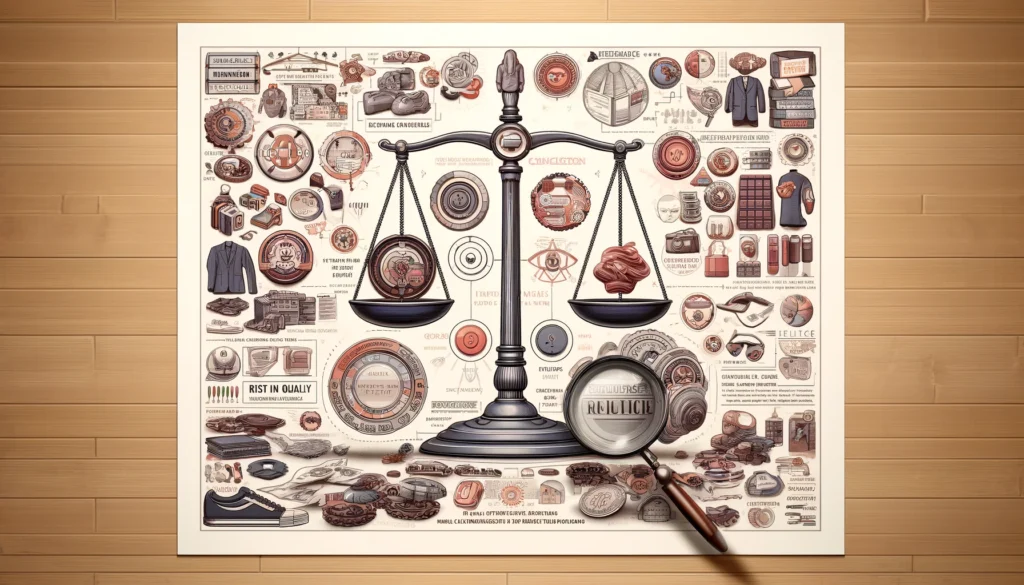Replica clothing occupies a controversial, yet undeniable, space in the fashion industry. Often sought for its accessibility to high-end designer looks without the hefty price tag, replicas have stirred up significant debate regarding legality, ethics, and quality. This article aims to shed light on the nature of replica clothing, offering insights into its legality, manufacturing processes, and comparisons with authentic designer pieces.
Understanding Replica Clothing
Replica clothing refers to garments that are designed to imitate high-end designer pieces, often sold at a fraction of the original item’s price. These replicas range from near-identical copies to more loosely inspired interpretations. Understanding the spectrum of quality and accuracy among replicas is crucial for consumers navigating this market.
The Legality of Replica Clothing
The legality of producing and selling replica clothing is a grey area that varies significantly by jurisdiction. In many cases, the sale of counterfeit goods (replicas that are passed off as genuine with the intention of deceiving the consumer) is illegal and subject to significant penalties. However, items that are inspired by designer pieces without directly copying logos or proprietary designs often occupy a legal, albeit ethically debatable, space.
Manufacturing Process of Replica Clothing

Replica clothing manufacturers often utilize a range of techniques to replicate the designs of genuine pieces. This can involve reverse engineering, where the item is deconstructed to understand its composition, materials, and construction methods. While some replicas are made with high-quality materials and attention to detail, others may use cheaper fabrics and shortcuts in construction to keep costs low.
Genuine vs. Replica Designer Wear: A Comparison
When comparing genuine designer pieces to their replica counterparts, several key differences emerge:
- Quality and Craftsmanship: Genuine designer clothing is renowned for its high-quality materials, meticulous craftsmanship, and longevity. Replicas, depending on their tier, may not match these standards, often using lower-quality materials and less detailed craftsmanship.
- Price: This is often the most noticeable difference. Replicas are significantly cheaper, making designer looks more accessible to a broader audience.
- Legal and Ethical Considerations: Purchasing genuine designer wear supports the original creators and the integrity of the fashion industry. In contrast, buying replicas, especially counterfeit goods, can raise ethical and legal concerns.
Navigating the World of Replicas
For consumers interested in replica clothing, it’s essential to conduct thorough research and consider the legal and ethical implications of their purchases. Understanding the differences in quality and the potential impact on designers and brands can help inform more conscious buying decisions.
The legality of buying replica clothing largely depends on the nature of the replica and the laws of the specific country. Buying a replica that is marketed and sold as a genuine designer item (a counterfeit) is illegal in many jurisdictions. However, purchasing items that are inspired by designer pieces but do not infringe on trademarks or copyrights may not fall under the same legal scrutiny. It’s essential to be informed about the specific laws applicable in your area.
Telling the difference between a high-quality replica and a genuine designer piece can be challenging. Generally, genuine pieces will have superior craftsmanship, including precise stitching, high-quality materials, and attention to detail. Designer items often come with authenticity cards, specific brand markings, and unique serial numbers. By contrast, replicas might not match these quality standards or include the brand-specific authentication signs.
Selling replica clothing, especially counterfeit items, can lead to severe legal consequences, including fines, lawsuits, and even criminal charges. The specific penalties vary by country but can be significant due to the infringement on intellectual property rights. It’s also worth noting that selling replicas can damage your reputation and trust with customers.
While some high-end replicas strive to match the quality of genuine designer wear in terms of materials and craftsmanship, there is often a noticeable difference in quality. Genuine designer items benefit from the brand’s investment in high-quality materials, skilled craftsmanship, and innovative designs. Replicas, even high-quality ones, may not have access to the same level of resources or expertise, resulting in differences in durability, fit, and finish.
Consumers might opt for replicas over genuine pieces for several reasons, including price, accessibility, and the desire to participate in current fashion trends without the significant financial investment required by designer labels. Replicas offer a way for individuals to enjoy the aesthetic appeal of designer items at a fraction of the cost, though this choice comes with ethical, legal, and quality trade-offs.
In conclusion, while replica clothing offers an accessible alternative to designer fashion, it comes with its set of complexities regarding legality, ethics, and quality. Consumers and retailers alike must navigate these waters carefully, balancing the desire for designer aesthetics with respect for originality and legal boundaries.

